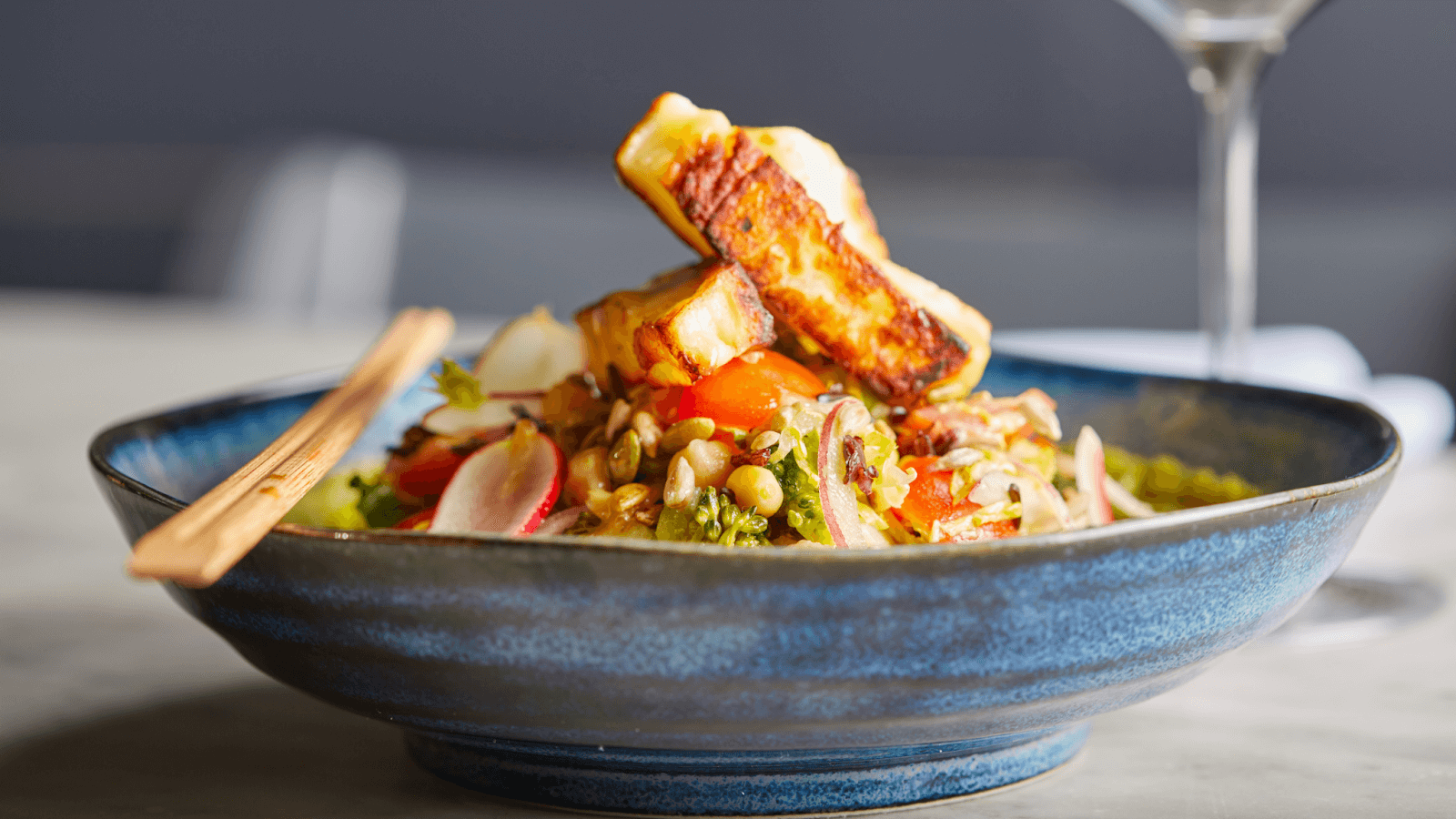Did you know that Ayurveda emphasizes six distinct taste elements that comprise a balanced diet? Including each of these tastes in every meal helps achieve optimal health & nourishment.
The concept of Rasa is explained here. Individually each taste is referred to as ‘RASA’; Sanskrit word for ‘Taste’. These tastes or Rasa’s are made from the five basic essentials of our doshas – fire, air, space, water & earth.
If you have read our previous blog on ‘Doshas’ you will be acquainted with the 3 types of doshas (Vata, Pitta & Kapha) & their predominant traits.
This blog is intended to share the principles of each of the six ‘Rasas’ and their impact on doshas. Rasa is literally our lifeblood (Rasa Dhatu).
Rasa influences every aspect of who & what we are; our mind, body & spirit. Ayurveda considers ‘Rasa’ beyond just enjoying what we eat. It is a tool for healing.
When we are hungry the digestive strength is at its peak. Sweet, salt and sour are heavy in nature and so are best consumed first to utilise the digestive strength. Pungent, bitter and astringent foods need lesser digestive strength and are best enjoyed in the second half of the meal.
Read: Know your food
Read: Are you following an ayurvedic clock?
The six Rasas are illustrated with examples to guide you towards making an informed choice when it comes to daily meal planning –
1. Sweet (Madhura) – comprises of the dominant elements of earth & water. This rasa is particularly cooling, nourishing & grounding.
The taste is derived from natural sugars and when consumed in moderate quantities it promotes longevity & balances hormones.
Madhura rasa is known to balance the Vata & Pitta doshas & increase the Kapha dosha. Consumed in excess it can lead to diabetes, lethargy, anxiety, heart diseases and weight gain since it is fairly slow to digest.
Foods in this category include rice, milk, dairy, honey, sweet fruits, wheat, rice, pumpkin, natural sweeteners like date & honey, meat, fish, sugar & pumpkins.
2. Sour (Amla) – Sour taste is defined by the elements of earth & fire. It stimulates the Pitta & Kapha doshas because of its earth constitution and pacifies Vata because it does not contain any air element.
It is known to enhance the appetite, aid digestion, assist in the elimination of food waste and saliva production.
Amla rasa is found in yoghurt/curd, berries, fermented foods. Vinegar, lemons, cheese, tamarind, wine, salad dressings, tomatoes, citrus fruits & pickles also have Amla rasa. Consumed in excess it results in diarrhoea, hyperacidity & excessive thirst.
Emotional outbursts like jealousy, anger, impatience and temper are the results of excess Amla rasa. Moderate quantities help awaken thoughts & emotions, boosts intellectual activities and strengthen the heart.
3. Salty (Lavana) – Salty is dominated by the elements of water & fire. Because of the water element, it is heavy and due to the presence of the fire element, it has a hot quality and increases Pitta dosha.
Known to balance the Vata and aggravate Pitta & Kapha doshas, it is said to improve saliva production & appetite. Lavana rasa helps in digestion, improves absorption of minerals, cleanses & lubricates tissues.
Ingested in excess it can have a negative impact on the skin & blood while also resulting in high blood pressure. Salt is found in soya sauce, rock, table and sea salt, seafood, salted & cured meats, seaweed & black olives.
The salt taste should be consumed next to sweet and sour food in every meal.
4. Pungent (Katu) – This is a digestive stimulant and is defined by spicy, sharp taste & dry intense heat. It is a combination of fire & air elements and is usually created by the presence of aromatic volatile oils and resins.
Katu rasa balances excess Kapha & aggravates Pitta & Vata. It warms the body, clears toxins & sinuses and eradicates excess fat.
This pungent rasa stimulates digestion, encourages sweating & improves blood circulation. Consumed in excess it can lead to excess thirst, imbalance in the nervous and reproductive system, irritability, anxiousness, digestive discomfort and aggression.
Pungent foods include ginger, garlic, hot spices, onions, mustard, chillies, hot peppers, cloves, salsa, radish.
Energetically the pungent taste is invigorating, stimulating and penetrating; thus making it an effective way to clear areas of excess moisture and build up stagnation.
5. Bitter (Tikta) – This is made of air & space elements, it is one of the most cooling and lightest of all the six tastes.
Know for its detoxifying qualities, tikta rasa removes waste and toxic material from the body. It is best suited for Pita & Kapha doshas and aggravates Vata.
Commonly found in green leafy vegetables, bitter melons, olives, coffee, sesame seeds and oil, aubergines, kale, celery, broccoli, sprouts, green, yellow vegetables herbal teas, spices, saffron & turmeric.
Tikta rasa is beneficial to help manage food cravings, clear emotions and relieves thirst and fever. It also reduces excess fat & water and assists in detoxifying.
Consumed in excess it can cause gas, upset stomach, anxiety, fear & insomnia. The bitter taste is best consumed in moderation, especially during pregnancy.
6. Astringent (Kashaya) – Astringent Made of air and earth it is said to be a dry flavour. Those with Vata need to consume this taste in moderation as it causes gas.
This taste is very good for Pitta & Kapha doshas. Kashaya rasa slows digestion and lightens the body.
It helps repair wounds, fights diarrhoea, water retention in the body and is anti-inflammatory in nature. Its tendency to draw inward helps compress and hold the tissues together, this, in turn, results in strong, healthy organs, muscles, and skin.
Kashaya rasa can be found abundantly in unripe bananas, pomegranates, tea, coffee, green beans, alfalfa sprouts, okra, lentils, broccoli, turnips, green apples, pears, cruciferous vegetables like cauliflower and cabbage and fruits like apples, cranberries, pears, amla and green grapes.
Too much of astringent taste can also cause muscle and joint discomfort, stagnation in the blood and lymph, sluggish circulation, difficulty sleeping, emotional heaviness, and feelings of anxiousness.
Summary:
As with most things in Ayurveda, the combination of tastes that is right for you depends a lot on ‘YOU’—your constitution, your imbalances, your age, your environment amongst other critical, contributing factors.
Simply put, while each of the six tastes is necessary; the specifics are determined by the context of each individual and may change over time.
A balanced diet will include an appropriate quantity of each of the six tastes, according to one’s body composition, current state & season.
Now that you have a basic understanding of Rasas; it is recommended to consult your Ayurvedic physician to create a personalized meal plan depending on what suits you best.
May your life always taste gratifying, wholesome and abundant in every way!











